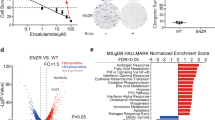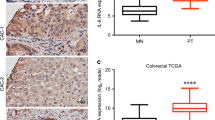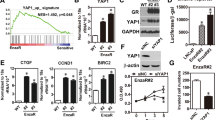Abstract
TRAIL/Apo-2L is a member of the tumor necrosis factor superfamily and has recently been shown to induce apoptosis in cancer cells, but not in normal cells. In nude mice injected with human tumors, TRAIL reduces the size of these tumors without side effects. Akt promotes cell survival and block apoptosis. Some prostate cancer cells express high levels of Akt due to lack of active lipid phosphatase PTEN, a negative regulator of PI-3 kinase pathway, which may be responsible for drug resistance. The objective of this paper is to investigate the intracellular molecules that regulate TRAIL resistance. We have examined caspase-8 activity, BID cleavage, Akt activity, mitochondrial membrane potential (ΔΨm) and apoptosis in prostate cancer (LNCap, PC-3, PC-3M and DU145) cells treated with or without TRAIL. PC-3, PC-3M and DU145 cells are sensitive to TRAIL, whereas LNCap cells are resistant. LNCap cells express the highest level of constitutively active Akt, which is directly correlated with TRAIL resistance. TRAIL activates caspase-8 in all the cell lines. Downregulation of constitutively active Akt by PI-3 kinase inhibitors (wortmannin and LY-294002), dominant negative Akt or PTEN, renders LNCap cells sensitive to TRAIL. Inhibition of TRAIL sensitivity occurs at the level of BID cleavage. Inhibition of protein synthesis by cycloheximide also causes LNCap cells sensitive to TRAIL. Overexpression of Bcl-2 or Bcl-XL inhibits TRAIL-induced ΔΨm and apoptosis. Overexpression of constitutively active Akt in PC-3M cells (express very low levels of constitutively active Akt) restores TRAIL resistance. These data suggest that elevated Akt activity protects LNCap cells from TRAIL-induced apoptosis, and the PI-3 kinase/Akt pathway may inhibit apoptotic signals by inhibiting processing of BID. Thus, constitutively active Akt is an important regulator of TRAIL sensitivity in prostate cancer.
This is a preview of subscription content, access via your institution
Access options
Subscribe to this journal
Receive 50 print issues and online access
$259.00 per year
only $5.18 per issue
Buy this article
- Purchase on Springer Link
- Instant access to full article PDF
Prices may be subject to local taxes which are calculated during checkout






Similar content being viewed by others
References
Ashkenazi A, Dixit VM . 1999 Curr. Opin. Cell Biol. 11: 255–260
Ashkenazi A, Pai RC, Fong S, Leung S, Lawrence DA, Marsters SA, Blackie C, Chang L, McMurtrey AE, Hebert A, DeForge L, Koumenis IL, Lewis D, Harris L, Bussiere J, Koeppen H, Shahrokh Z, Schwall RH . 1999 J. Clin. Invest. 104: 155–162
Bodmer JL, Holler N, Reynard S, Vinciguerra P, Schneider P, Juo P, Blenis J, Tschopp J . 2000 Nat. Cell Biol. 2: 241–243
Brunet A, Bonni A, Zigmond MJ, Lin MZ, Juo P, Hu LS, Anderson MJ, Arden KC, Blenis J, Greenberg ME . 1999 Cell 96: 857–868
Brunet A, Park J, Tran H, Hu LS, Hemmings BA, Greenberg ME . 2001 Mol. Cell. Biol. 21: 952–965
Cairns P, Okami K, Halachmi S, Halachmi N, Esteller M, Herman JG, Jen J, Isaacs WB, Bova GS, Sidransky D . 1997 Cancer Res. 57: 4997–5000
Cantley LC, Neel BG . 1999 Proc. Natl. Acad. Sci. USA. 96: 4240–4245
Cardone MH, Roy N, Stennicke HR, Salvesen GS, Franke TF, Stanbridge E, Frisch S, Reed JC . 1998 Science 282: 1318–1321
Cheney IW, Johnson DE, Vaillancourt MT, Avanzini J, Morimoto A, Demers GW, Wills KN, Shabram PW, Bolen JB, Tavtigian SV, Bookstein R . 1998 Cancer Res. 58: 2331–2334
Datta SR, Dudek H, Tao X, Masters S, Fu H, Gotoh Y, Greenberg ME . 1997 Cell 91: 231–241
del Peso L, Gonzalez-Garcia M, Page C, Herrera R, Nunez G . 1997 Science 278: 687–689
Di Cristofano A, Pesce B, Cordon-Cardo C, Pandolfi PP . 1998 Nat. Genet. 19: 348–355
Downward J . 1998 Curr. Opin. Cell Biol. 10: 262–267
Du C, Fang M, Li Y, Li L, Wang X . 2000 Cell 102: 33–42
French LE, Tschopp J . 1999 Nat. Med. 5: 146–147
Furnari FB, Lin H, Huang HS, Cavenee WK . 1997 Proc. Natl. Acad. Sci. USA. 94: 12479–12484
Green DR, Amarante-Mendes GP . 1998 Results Probl. Cell Differ. 24: 45–61
Green DR, Reed JC . 1998 Science 281: 1309–1312
Griffith TS, Chin WA, Jackson GC, Lynch DH, Kubin MZ . 1998 J. Immunol. 161: 2833–2840
Griffith TS, Lynch DH . 1998 Curr. Opin. Immunol. 10: 559–563
Griffith TS, Wiley SR, Kubin MZ, Sedger LM, Maliszewski CR, Fanger NA . 1999 J. Exp. Med. 189: 1343–1354
Guldberg P, thor Straten P, Birck A, Ahrenkiel V, Kirkin AF, Zeuthen J . 1997 Cancer Res. 57: 3660–3663
Gura T . 1997 Science 277: 768
Hemmings BA . 1997 Science 275: 628–630
Ittmann MM . 1998 Oncol. Rep. 5: 1329–1335
Kandel ES, Hay N . 1999 Exp. Cell Res. 253: 210–229
Keane MM, Ettenberg SA, Nau MM, Russell EK, Lipkowitz S . 1999 Cancer Res. 59: 734–741
Kennedy SG, Kandel ES, Cross TK, Hay N . 1999 Mol. Cell. Biol. 19: 5800–5810
Keogh SA, Walczak H, Bouchier-Hayes L, Martin SJ . 2000 FEBS Lett. 471: 93–98
Kim EJ, Suliman A, Lam A, Srivastava RK . 2001 Int. J. Oncol. 18: 187–194
Kim K, Fisher MJ, Xu SQ, el-Deiry WS . 2000 Clin. Cancer Res. 6: 335–346
Kischkel FC, Lawrence DA, Chuntharapai A, Schow P, Kim KJ, Ashkenazi A . 2000 Immunity 12: 611–620
Kluck RM, Martin SJ, Hoffman BM, Zhou JS, Green DR, Newmeyer DD . 1997 EMBO J. 16: 4639–4649
Kohno T, Takahashi M, Manda R, Yokota J . 1998 Genes Chrom. Cancer 22: 152–156
Kong D, Suzuki A, Zou TT, Sakurada A, Kemp LW, Wakatsuki S, Yokoyama T, Yamakawa H, Furukawa T, Sato M, Ohuchi N, Sato S, Yin J, Wang S, Abraham JM, Souza RF, Smolinski KN, Meltzer SJ, Horii A . 1997 Nat. Genet. 17: 143–144
Kops GJ, Burgering BM . 1999 J. Mol. Med. 77: 656–665
Korsmeyer SJ, Gross A, Harada H, Zha J, Wang K, Yin XM, Wei M, Zinkel S . 1999 Cold Spring Harb. Symp. Quant. Biol. 64: 343–350
Kroemer G, Reed JC . 2000 Nat. Med. 6: 513–519
Kulik G, Klippel A, Weber MJ . 1997 Mol. Cell. Biol. 17: 1595–1606
Landis SH, Murray T, Bolden S, Wingo PA . 1999 CA Cancer J. Clin. 49: 8–31
Li J, Yen C, Liaw D, Podsypanina K, Bose S, Wang SI, Puc J, Miliaresis C, Rodgers L, McCombie R, Bigner SH, Giovanella BC, Ittmann M, Tycko B, Hibshoosh H, Wigler MH, Parsons R . 1997 Science 275: 1943–1947
Liaw D, Marsh DJ, Li J, Dahia PL, Wang SI, Zheng Z, Bose S, Call KM, Tsou HC, Peacocke M, Eng C, Parsons R . 1997 Nat. Genet. 16: 64–67
Liu W, James CD, Frederick L, Alderete BE, Jenkins RB . 1997 Cancer Res. 57: 5254–5257
Long RJ, Roberts KP, Wilson MJ, Ercole CJ, Pryor JL . 1997 J. Androl. 18: 15–20
Luo X, Budihardjo I, Zou H, Slaughter C, Wang X . 1998 Cell 94: 481–490
Lynch DK, Ellis CA, Edwards PA, Hiles ID . 1999 Oncogene 18: 8024–8032
Medema RH, Kops GJ, Bos JL, Burgering BM . 2000 Nature 404: 782–787
Mori S, Murakami-Mori K, Nakamura S, Ashkenazi A, Bonavida B . 1999 J. Immunol. 162: 5616–5623
Muzio M . 1998 Int. J. Clin. Lab. Res. 28: 141–147
Nagata S . 1997 Cell 88: 355–365
Nesterov A, Lu X, Johnson M, Miller GJ, Ivashchenko Y, Kraft AS . 2001 J. Biol. Chem. 276: 10767–10774
Okami K, Wu L, Riggins G, Cairns P, Goggins M, Evron E, Halachmi N, Ahrendt SA, Reed AL, Hilgers W, Kern SE, Koch WM, Sidransky D, Jen J . 1998 Cancer Res. 58: 509–511
Orlinick JR, Vaishnaw AK, Elkon KB . 1999 Int. Rev. Immunol. 18: 293–308
Pan G, O'Rourke K, Chinnaiyan AM, Gentz R, Ebner R, Ni J, Dixit VM . 1997 Science 276: 111–113
Persad S, Attwell S, Gray V, Delcommenne M, Troussard A, Sanghera J, Dedhar S . 2000 Proc. Natl. Acad. Sci. USA. 97: 3207–3212
Petrylak DP . 1999 Urology 54: 30–35
Pisters LL . 1999 Semin. Oncol. 26: 202–216
Rasheed BK, Stenzel TT, McLendon RE, Parsons R, Friedman AH, Friedman HS, Bigner DD, Bigner SH . 1997 Cancer Res. 57: 4187–4190
Richie JP . 1999 Urology 54: 15–18
Rieger J, Ohgaki H, Kleihues P, Weller M . 1999 Acta Neuropathol. (Berlin) 97: 1–4
Scaffidi C, Fulda S, Srinivasan A, Friesen C, Li F, Tomaselli KJ, Debatin KM, Krammer PH, Peter ME . 1998 EMBO J. 17: 1675–1687
Schneider P, Bodmer JL, Thome M, Hofmann K, Holler N, Tschopp J . 1997 FEBS Lett. 416: 329–334
Screaton GR, Mongkolsapaya J, Xu XN, Cowper AE, McMichael AJ, Bell JI . 1997 Curr. Biol. 7: 693–696
Sekulic A, Hudson CC, Homme JL, Yin P, Otterness DM, Karnitz LM, Abraham RT . 2000 Cancer Res. 60: 3504–3513
Sheridan JP, Marsters SA, Pitti RM, Gurney A, Skubatch M, Baldwin D, Ramakrishnan L, Gray CL, Baker K, Wood WI, Goddard AD, Godowski P, Ashkenazi A . 1997 Science 277: 818–821
Snell V, Clodi K, Zhao S, Goodwin R, Thomas EK, Morris SW, Kadin ME, Cabanillas F, Andreeff M, Younes A . 1997 Br. J. Haematol. 99: 618–624
Sprick MR, Weigand MA, Rieser E, Rauch CT, Juo P, Blenis J, Krammer PH, Walczak H . 2000 Immunity 12: 599–609
Srivastava RK . 2000 Mol. Cell. Biol. Res. Commun. 4: 67–75
Srivastava RK, Sasaki CY, Hardwick JM, Longo DL . 1999a J. Exp. Med. 190: 253–265
Srivastava RK, Sollott SJ, Khan L, Hansford R, Lakatta EG, Longo DL . 1999b Mol. Cell. Biol. 19: 5659–5674
Stambolic V, Suzuki A, de la Pompa JL, Brothers GM, Mirtsos C, Sasaki T, Ruland J, Penninger JM, Siderovski DP, Mak TW . 1998 Cell 95: 29–39
Steck PA, Pershouse MA, Jasser SA, Yung WK, Lin H, Ligon AH, Langford LA, Baumgard ML, Hattier T, Davis T, Frye C, Hu R, Swedlund B, Teng DH, Tavtigian SV . 1997 Nat. Genet. 15: 356–362
Suliman A, Lam A, Datta R, Srivastava RK . 2001 Oncogene 20: 2122–2133
Susin SA, Lorenzo HK, Zamzami N, Marzo I, Snow BE, Brothers GM, Mangion J, Jacotot E, Costantini P, Loeffler M, Larochette N, Goodlett DR, Aebersold R, Siderovski DP, Penninger JM, Kroemer G . 1999 Nature 397: 441–446
Tang ED, Nunez G, Barr FG, Guan KL . 1999 J. Biol. Chem. 274: 16741–16746
Tashiro H, Blazes MS, Wu R, Cho KR, Bose S, Wang SI, Li J, Parsons R, Ellenson LH . 1997 Cancer Res. 57: 3935–3940
Teng DH, Hu R, Lin H, Davis T, Iliev D, Frye C, Swedlund B, Hansen KL, Vinson VL, Gumpper KL, Ellis L, El-Naggar A, Frazier M, Jasser S, Langford LA, Lee J, Mills GB, Pershouse MA, Pollack RE, Tornos C, Troncoso P, Yung WK, Fujii G, Berson A, Steck PA . et al. 1997 Cancer Res. 57: 5221–5225
Tonks NK, Myers MP . 1999 Science 286: 2096–2097
Verhagen AM, Ekert PG, Pakusch M, Silke J, Connolly LM, Reid GE, Moritz RL, Simpson RJ, Vaux DL . 2000 Cell 102: 43–53
Vlietstra RJ, van Alewijk DC, Hermans KG, van Steenbrugge GJ, Trapman J . 1998 Cancer Res. 58: 2720–2723
Wajant H, Haas E, Schwenzer R, Muhlenbeck F, Kreuz S, Schubert G, Grell M, Smith C, Scheurich P . 2000 J. Biol. Chem. 275: 24357–24366
Walczak H, Degli-Esposti MA, Johnson RS, Smolak PJ, Waugh JY, Boiani N, Timour MS, Gerhart MJ, Schooley KA, Smith CA, Goodwin RG, Rauch CT . 1997 EMBO J. 16: 5386–5397
Walczak H, Miller RE, Ariail K, Gliniak B, Griffith TS, Kubin M, Chin W, Jones J, Woodward A, Le T, Smith C, Smolak P, Goodwin RG, Rauch CT, Schuh JC, Lynch DH . 1999 Nat. Med. 5: 157–163
Weng LP, Smith WM, Brown JL, Eng C . 2001 Hum. Mol. Genet. 10: 605–616
Whang YE, Wu X, Suzuki H, Reiter RE, Tran C, Vessella RL, Said JW, Isaacs WB, Sawyers CL . 1998 Proc. Natl. Acad. Sci. USA 95: 5246–5250
Wu GS, Burns TF, McDonald III ER, Jiang W, Meng R, Krantz ID, Kao G, Gan DD, Zhou JY, Muschel R, Hamilton SR, Spinner NB, Markowitz S, Wu G, el-Deiry WS . 1997 Nat. Genet. 17: 141–143
Wu X, Senechal K, Neshat MS, Whang YE, Sawyers CL . 1998 Proc. Natl. Acad. Sci. USA 95: 15587–15591
Acknowledgements
We extend our sincere thanks to Dr Stanley Korsmeyer (Dana-Farber Cancer Institute, Boston, MA) for providing the Bcl-2 and Bcl-XL expression vector. We also thank Dr William Sellers (Dana-Farber Cancer Institute, Boston, MA) for providing PTEN expression vector.
Author information
Authors and Affiliations
Corresponding author
Rights and permissions
About this article
Cite this article
Chen, X., Thakkar, H., Tyan, F. et al. Constitutively active Akt is an important regulator of TRAIL sensitivity in prostate cancer. Oncogene 20, 6073–6083 (2001). https://doi.org/10.1038/sj.onc.1204736
Received:
Revised:
Accepted:
Published:
Issue Date:
DOI: https://doi.org/10.1038/sj.onc.1204736
Keywords
This article is cited by
-
MAP kinase ERK5 modulates cancer cell sensitivity to extrinsic apoptosis induced by death-receptor agonists
Cell Death & Disease (2023)
-
Dynamic interplay between sortilin and syndecan-1 contributes to prostate cancer progression
Scientific Reports (2023)
-
Targeting PI3K/Akt signal transduction for cancer therapy
Signal Transduction and Targeted Therapy (2021)
-
Apoptosis of cancer cells is triggered by selective crosslinking and inhibition of receptor tyrosine kinases
Communications Biology (2019)
-
The regulation of combined treatment-induced cell death with recombinant TRAIL and bortezomib through TRAIL signaling in TRAIL-resistant cells
BMC Cancer (2018)



